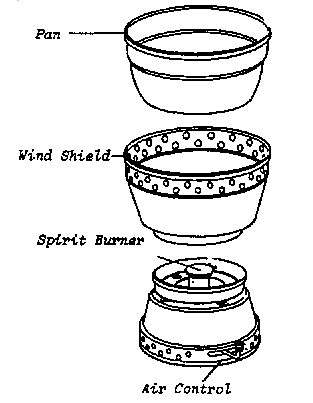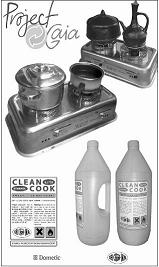Difference between revisions of "Alcohol Stoves"
***** (***** | *****) m |
***** (***** | *****) m |
||
| (17 intermediate revisions by 5 users not shown) | |||
| Line 1: | Line 1: | ||
| − | [[File:GIZ HERA Cooking Energy Compendium small.png|left|831px|GIZ HERA Cooking Energy Compendium|alt=GIZ HERA Cooking Energy Compendium small.png|link=GIZ HERA Cooking Energy Compendium]]<br/> | + | [[File:GIZ HERA Cooking Energy Compendium small.png|left|831px|GIZ HERA Cooking Energy Compendium|alt=GIZ HERA Cooking Energy Compendium small.png|link=GIZ HERA Cooking Energy Compendium]]<br/><br/><!-- |
| − | < | + | -->{{#ifeq: {{#show: {{PAGENAME}} |?Hera category}} | Cooking Energy System |'''[[GIZ HERA Cooking Energy Compendium#Cooking Energy Technologies and Practices|Cooking Energy System]]''' {{!}} | [[GIZ HERA Cooking Energy Compendium#Cooking Energy Technologies and Practices|Cooking Energy System]] {{!}} | }} <!-- |
| + | |||
| + | -->{{#ifeq: {{#show: {{PAGENAME}} |?Hera category}} | Basics |'''[[GIZ HERA Cooking Energy Compendium#Basics about Cooking Energy|Basics]]''' {{!}} | [[GIZ HERA Cooking Energy Compendium#Basics about Cooking Energy|Basics]] {{!}} | }} <!-- | ||
| + | |||
| + | -->{{#ifeq: {{#show: {{PAGENAME}} |?Hera category}} | Policy Advice |'''[[GIZ HERA Cooking Energy Compendium#Policy Advice on Cooking Energy|Policy Advice]]''' {{!}} | [[GIZ HERA Cooking Energy Compendium#Policy Advice on Cooking Energy|Policy Advice]] {{!}} | }} <!-- | ||
| + | |||
| + | -->{{#ifeq: {{#show: {{PAGENAME}} |?Hera category}} | Planning |'''[[GIZ HERA Cooking Energy Compendium#Planning Cooking Energy Interventions|Planning]]''' {{!}} | [[GIZ HERA Cooking Energy Compendium#Planning Cooking Energy Interventions|Planning]] {{!}} | }} <!-- | ||
| + | |||
| + | -->{{#ifeq: {{#show: {{PAGENAME}} |?Hera category}} | ICS Supply |'''[[GIZ HERA Cooking Energy Compendium#Designing and Implementing Improved Cookstoves .28ICS.29 Supply Interventions|Designing and Implementing ICS Supply]]''' {{!}} | [[GIZ HERA Cooking Energy Compendium#Designing and Implementing Improved Cookstoves .28ICS.29 Supply Interventions|Designing and Implementing ICS Supply]] {{!}} | }} <!-- | ||
| + | |||
| + | -->{{#ifeq: {{#show: {{PAGENAME}} |?Hera category}} | Woodfuel Supply |'''[[GIZ HERA Cooking Energy Compendium#Designing and Implementing Woodfuel Supply Interventions|Designing and Implementing Woodfuel Supply]]''' {{!}} | [[GIZ HERA Cooking Energy Compendium#Designing and Implementing Woodfuel Supply Interventions|Designing and Implementing Woodfuel Supply]] {{!}} | }} <!-- | ||
| + | |||
| + | -->{{#ifeq: {{#show: {{PAGENAME}} |?Hera category}} | Climate Change |'''[[GIZ HERA Cooking Energy Compendium#Climate Change Related Issues|Climate Change]]''' | [[GIZ HERA Cooking Energy Compendium#Climate Change Related Issues|Climate Change]] {{!}} | }} <!-- | ||
| − | + | -->{{#ifeq: {{#show: {{PAGENAME}} |?Hera category}} | Extra |'''[[GIZ HERA Cooking Energy Compendium#Climate Change Related Issues|Extra]]''' | [[GIZ HERA Cooking Energy Compendium#Climate Change Related Issues|Extra]] }} | |
= Introduction = | = Introduction = | ||
| Line 26: | Line 38: | ||
Alcohol stoves have a very clean combustion, emit no soot and negligible emissions. Cooking is very fast as heat is available instantly after ignition of the fuel. | Alcohol stoves have a very clean combustion, emit no soot and negligible emissions. Cooking is very fast as heat is available instantly after ignition of the fuel. | ||
| − | For further advantages and disadvantes of alcohol as a fuel see also the article on<span style="color:#FF0000">[[ | + | For further advantages and disadvantes of alcohol as a fuel see also the article on<span style="color:#FF0000">[[Cooking with Ethanol and Methanol|Cooking with Ethanol and Methanol.]]</span> |
| − | |||
| + | <br/> | ||
<br/> | <br/> | ||
| Line 45: | Line 57: | ||
Project Gaia currently leads four community-based, small-scale ethanol distillation projects in Ethiopia. Also in Brazil and Haiti microdistillery projects are being implemented. These projects aim to allow communities to produce clean cooking fuel using local feedstocks, simultaneously adding value to agricultural markets by taking advantage of co-products of the distillation process<ref>http://www.projectgaia.com/index.php</ref>. | Project Gaia currently leads four community-based, small-scale ethanol distillation projects in Ethiopia. Also in Brazil and Haiti microdistillery projects are being implemented. These projects aim to allow communities to produce clean cooking fuel using local feedstocks, simultaneously adding value to agricultural markets by taking advantage of co-products of the distillation process<ref>http://www.projectgaia.com/index.php</ref>. | ||
| + | |||
| + | One of the pioneering efforts in use of low concentration ethanol for cooking and lighting <ref>[http://nariphaltan.org/ruralethanol.pdf Ethano fuel for rural households]</ref><ref>[http://www.nariphaltan.org/ethstove.pdf Development of low concentration ethanol stove]</ref> was done in early 2000s by Nimbkar Agricultural Research Institute<ref>[http://nariphaltan.org Nimbkar Agricultural Research Institute]</ref> in India. | ||
<br/> | <br/> | ||
| Line 56: | Line 70: | ||
*The [http://cleancookstoves.org/technology-and-fuels/fuels/ ‘Cookstove Fuels’] section of the Global Alliance for Clean Cookstoves | *The [http://cleancookstoves.org/technology-and-fuels/fuels/ ‘Cookstove Fuels’] section of the Global Alliance for Clean Cookstoves | ||
*[https://projectgaia.com/ Project Gaia homepage] | *[https://projectgaia.com/ Project Gaia homepage] | ||
| − | *[https://projectgaia.com/ten-years-in-ethiopia/ Ten Years in Ethiopia: A look back at the last decade.] Project Gaia (January 2015) | + | *[https://projectgaia.com/ten-years-in-ethiopia/ Ten Years in Ethiopia: A look back at the last decade.] Project Gaia (January 2015) |
| − | |||
| − | |||
| − | |||
<br/> | <br/> | ||
| Line 71: | Line 82: | ||
<br/> | <br/> | ||
| − | + | Top of the page | |
[[GIZ HERA Cooking Energy Compendium|--> Back to Overview GIZ HERA Cooking Energy Compendium]] | [[GIZ HERA Cooking Energy Compendium|--> Back to Overview GIZ HERA Cooking Energy Compendium]] | ||
| − | |||
| − | |||
| − | |||
| − | |||
| − | |||
| − | |||
| − | |||
| − | |||
| − | |||
| − | |||
| − | |||
| − | |||
| − | |||
| − | |||
| − | |||
| − | |||
| − | |||
| − | |||
| − | |||
| − | |||
| − | |||
| − | |||
| − | |||
| − | |||
| − | |||
| − | |||
| − | |||
| − | |||
| − | |||
| − | |||
| − | |||
| − | |||
| − | |||
| − | |||
| − | |||
| − | |||
| − | |||
| − | |||
| − | |||
| − | |||
| − | |||
| − | |||
| − | |||
| − | |||
| − | |||
| − | |||
| − | |||
| − | |||
| − | |||
| − | |||
| − | |||
| − | |||
| − | |||
| − | |||
| − | |||
| − | |||
| − | |||
| − | |||
<br/><br/> | <br/><br/> | ||
| − | + | {{#set: Hera category=Cooking Energy System}} | |
| − | |||
| − | |||
| − | |||
| − | |||
| − | |||
| − | |||
| − | |||
| − | |||
| − | |||
| − | |||
| + | [[Category:Cooking_Energy_Compendium_(GIZ_HERA)]] | ||
| + | [[Category:Cookstoves]] | ||
[[Category:Bioalcohol]] | [[Category:Bioalcohol]] | ||
| − | |||
| − | |||
Revision as of 08:39, 11 April 2018
Cooking Energy System | Basics | Policy Advice | Planning | Designing and Implementing ICS Supply | Designing and Implementing Woodfuel Supply | Climate Change | Extra
Introduction
Stoves fueled with alcohol (ethanol and methanol) are not widely used in households. They are mainly used in areas where such stoves and fuels have been fostered and promoted by studies and projects.
Cooking with Alcohol Stoves
A stove to burn alcohol fuels can be very simple. It can be made relatively cheaply in countries with industries producing articles such as aluminium pots, etc.
The main components of the burner are shown here[1]:
Alcohol stoves have a very clean combustion, emit no soot and negligible emissions. Cooking is very fast as heat is available instantly after ignition of the fuel.
For further advantages and disadvantes of alcohol as a fuel see also the article onCooking with Ethanol and Methanol.
Experiences of Cooking with Ethanol Stoves
The most documented ethanol stove model is the CleanCook Stove by CleanCook Sweden AB, which is produced in South Africa and promoted mainly by Project Gaia.
The "CleanCook" Stove is available as a single or double-burner model for households and institutions. It is made from aluminium or stainless steel. The CleanCook is a non-pressurized alcohol stove with a refillable fuel canister of a capacity of 1,2 liters.[2] The canister contains a porous fiber that adsorbs alcohol and retains it in a manner that prevents spills, leaks, fires and explosions.[3] The power output per burner is rated at 1.8 kW at maximum heat, allowing for a cooking time of 4-5 hours. It can burn ethanol and methanol.[2]
Up to now, 55,000 cleancook stoves have been provided, mainly in Africa.[4]
Project Gaia and its Ethiopian sister organization, Gaia Association, have lab and field tested alcohol stoves since 2005. To date, alcohol stoves have been used by households in Ethiopia, Nigeria, South Africa, Malawi, Madagascar, Mozambique, Vietnam, Brazil and Haiti. Click here to access country study/project reports. The largest number of households using alcohol stoves is in the UNHCR refugee camps near Jijiga, Eastern Ethiopia where more than 4,000 households rely on the CleanCook stove and ethanol fuel as their main source of energy. The UNHCR now aims to scale up to provide ethanol cookstoves and fuel to up to 27,678 households by 2017.[5]
Project Gaia currently leads four community-based, small-scale ethanol distillation projects in Ethiopia. Also in Brazil and Haiti microdistillery projects are being implemented. These projects aim to allow communities to produce clean cooking fuel using local feedstocks, simultaneously adding value to agricultural markets by taking advantage of co-products of the distillation process[6].
One of the pioneering efforts in use of low concentration ethanol for cooking and lighting [7][8] was done in early 2000s by Nimbkar Agricultural Research Institute[9] in India.
Further Information
- Cooking with Ethanol and Methanol, article on energypedia
- HEDON Household Energy Network: This network provides information on all aspect of ethanol as a household fuel
- The ‘Cookstove Fuels’ section of the Global Alliance for Clean Cookstoves
- Project Gaia homepage
- Ten Years in Ethiopia: A look back at the last decade. Project Gaia (January 2015)
References
This article was originally published by GIZ HERA. It is basically based on experiences, lessons learned and information gathered by GIZ cook stove projects. You can find more information about the authors and experts of the original “Cooking Energy Compendium” in the Imprint.
- ↑ http://www.hedon.info/BP33_EthanolStovesForMauritius?bl=y
- ↑ 2.0 2.1 http://cleancook.com/productsstove-sales/
- ↑ https://en.wikipedia.org/wiki/Project_Gaia#The_CleanCook_Stove
- ↑ http://cleancook.com/about-us/
- ↑ http://us4.campaign-archive2.com/?u=541b5acf6da7c1b89cf4193b7&id=849ff674b0&e=da11811f02
- ↑ http://www.projectgaia.com/index.php
- ↑ Ethano fuel for rural households
- ↑ Development of low concentration ethanol stove
- ↑ Nimbkar Agricultural Research Institute
Top of the page
--> Back to Overview GIZ HERA Cooking Energy Compendium






















